Bal- Balthazar, Bal- Balthazar, Balthazaaar
Below:
Behzad Khosravi Noori, The Monument to the Invisible Citizen, 2018.
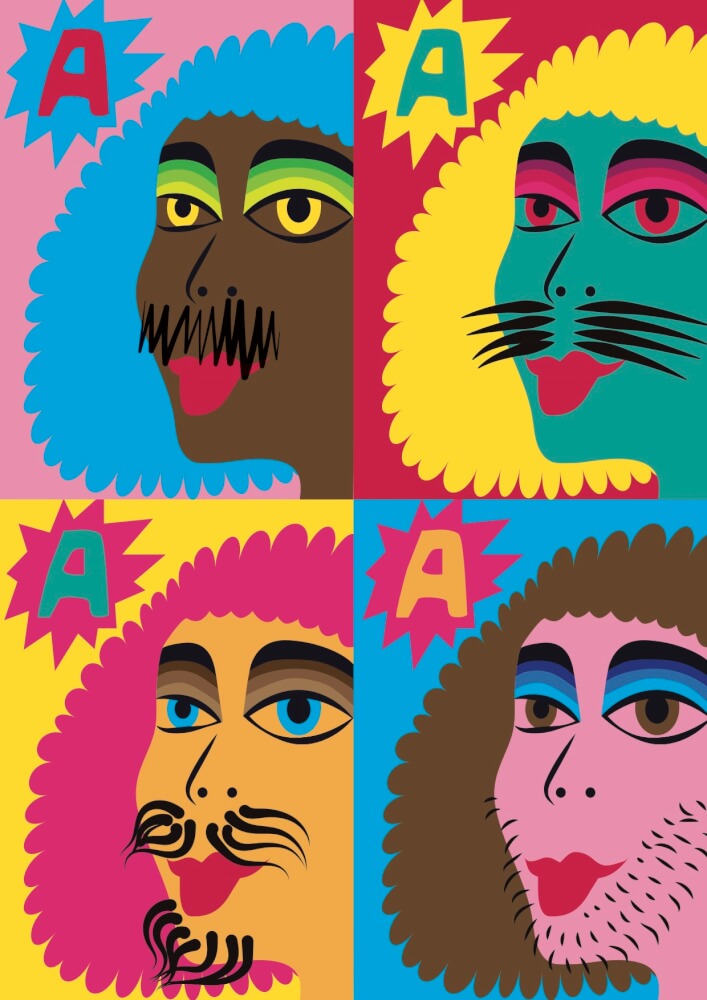
Intro: Nina Vukelić
It all started with a cartoon rendered in splashy technicolour retro utopia. A vibrant love letter to the golden era of the Zagreb School of Animated Films, a studio infamous for the iconic children’s program Professor Balthazar. The artist Behzad Khosravi Noori is about 10 years old and watching the show from his living room in Tehran. The centrepiece of each episode is manifested in the figure of a little grey-haired man, Professor Balthazar. He is an inventor of sorts pursuing a dedicated and deeply humorous mission to resolve the pressing dilemmas facing his fellow citizens. Every episode, Balthazar is able to save the day with an innovative gesture that unites technology and innate wisdom with a shade of good fortune. As the series began to air on local television in 1967, our hero takes his brisk walk on a hyper-political stage of Non-Aligned Movement (NAM), a multinational utopian project that emerged in 1961 from the complex political landscape of the Cold War. Orchestrated by three key figures: Josip Broz Tito, the president of Yugoslavia; Gamal Abdel Nasser, the president of Egypt; and Jawaharlal Nehru, the first prime minister of India, it aimed to achieve national sovereignty, decolonisation, anti-imperialism and new economic world order independent of USSR and US. Along the way, Professor Balthazar appeared on screens across NAM countries and flowered into a wider transnational phenomenon. Through a series of works that unearth the parallel histories between personal and political, Behzad Khosravi Noori excavates below the surface of this witty, whimsical character to pose questions on the future of our collective past. Can we attempt to situate in Professor Balthazar a relic to the flawed utopian project or a wistful memorial to the shared childhood memory? What happens to art when it crosses the border?
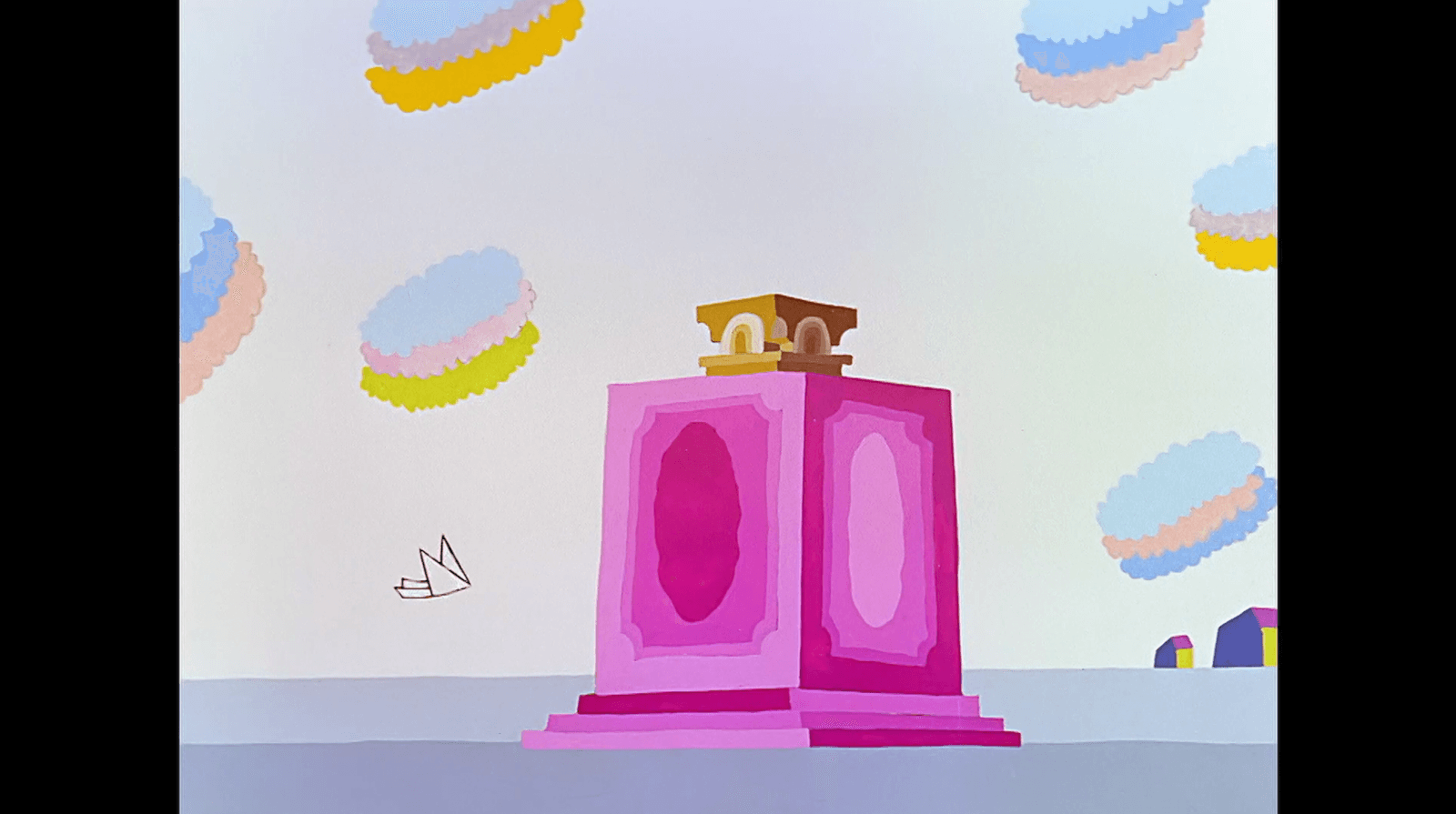
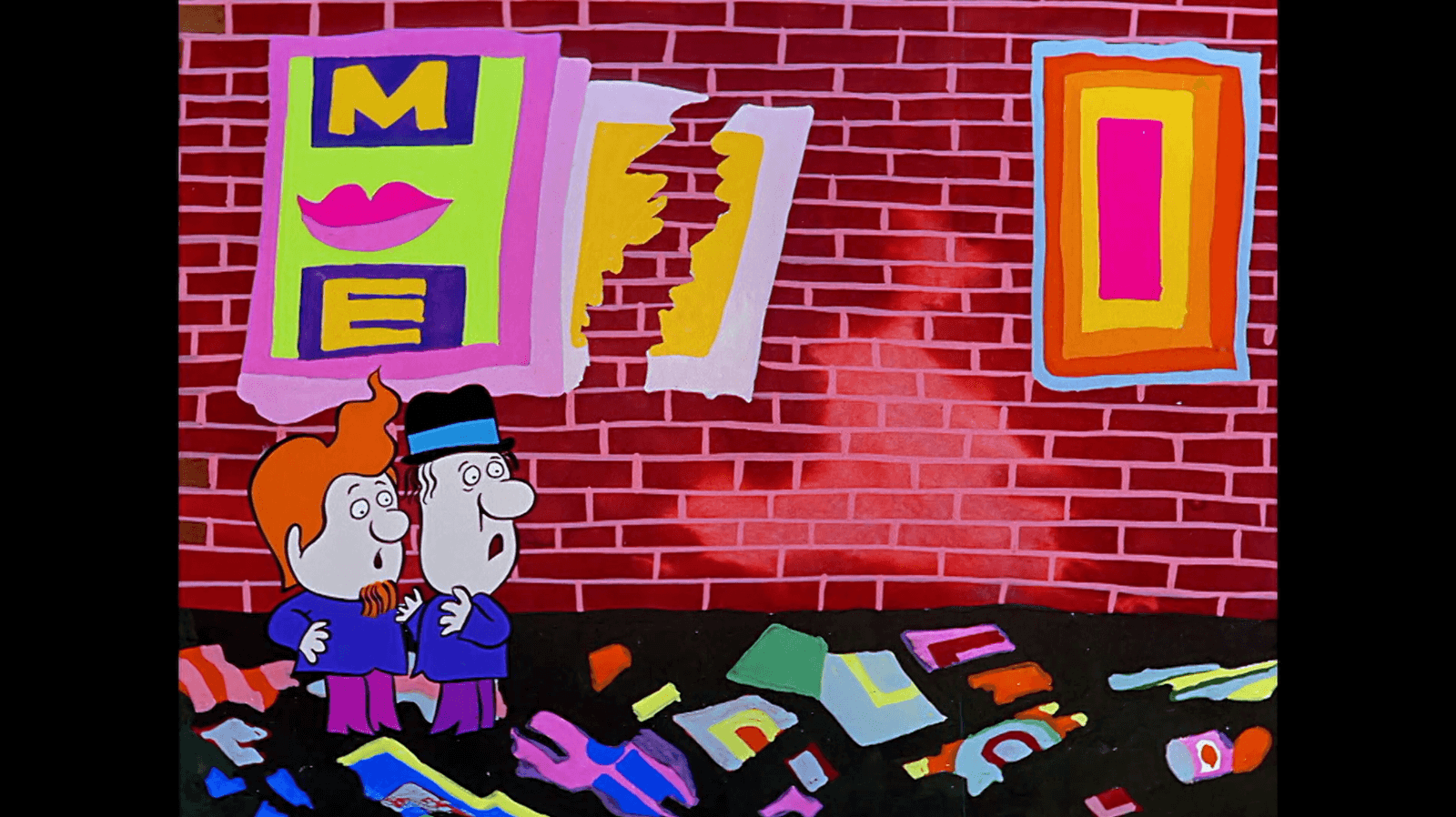
Stills from the professor balthazar cartoon
Text: Behzad Khosravi Noori
When I think about Professor Balthazar, more than recalling the exact story of an episode, I remember the condition: Iran during 80s, the war between my home country and Iraq, two feuded neighbours. We lived in Tehran, which was safer than the cities on the border, but we still got targeted. Rendered on a small black and white television, I could say that my first memory of Professor Balthazar was actually grayscale, devoid of colour, but true to its infectious musical theme. The sound of a crescendo score, “Bal- Balthazar, Bal- Balthazar, Balthazaaar,” swelling in our living room became a vessel that transported its otherworldly narratives into my world. Instances that carry my memory are a combination of skies threatening with missiles and the land of imagination in PB. The wild colours, simple stories, and playful personalities felt far removed from the brutal realities of conflict. I remember feeling a sense of ease, stirred by the Professor Balthazar’s defiant spirit of optimism. Other than being a pioneering ecologist and a promoter of mindfulness and tolerance, Professor Balthazar is also a time capsule that unpacks the story of a hyper-politicised time and place. His affable character and social awareness were a form of meta fiction that carried the plausibility of an alternative condition. Interesting fact: my Iraqi friends of the same generation also grew up with Hungarian, Yugoslav and Czechoslovakian animations while our nation-states were fighting against each other. The memory of our childhood is embedded in these opposing dualities: war and Balthazar.
Ironically, I don’t see myself as an outsider to the cultural specificity of this character — I am in fact digging into my own memory. My personal childhood memory in this case is fundamentally related to the history of Yugoslavia — an independent socialist state and one of the founders of the Non-Aligned Movement (NAM). I like to connect to it and respond in the form of hypothesis I have; how come we know about the Zagreb School of Animated Films (ZSAF), how come there is a connection? I started to look at the relationship between Iran and Yugoslavia and found that this relationship is very much connected to NAM. Professor Balthazar was introduced to the Iranian people only after the revolution in 1979, the same year Iran became a member of the movement. In this way I wanted to adopt a speculative and critical approach to the understanding of this global relationship, without any real historical evidence though. I came across one episode of Professor Balthazar that made me reconsider the idea of a monument, and approach it not only as a place of commemoration, but as an interactive tool triggering the possibility to think, play and rest. I’d like to share with you a fragment from this episode, Martin makes it to the top (1967-68). In Balthazartown there was a man named Martin. He could have been any ordinary Martin, except that he had a big problem. Nobody noticed him. Martin was miserable. Nobody, absolutely nobody ever noticed him. He was an invisible citizen. So Martin turns to Professor Balthazar , who encourages Martin to go out and fill in the blank pages of the book How to Climb to TheTop of Success. And how strange that at that very moment people began to notice the absence of a man who had never been noticed before. Suddenly everybody missed him. People felt a little bit guilty and so they pleaded to Professor . But not even he knew where Martin was. The entire town was looking for Martin. He had disappeared completely. In a special session at the city council it was decided to erect a monument in Martin’s memory, but how to make invisibility visible? Where did Martin go? What was the story of his success?
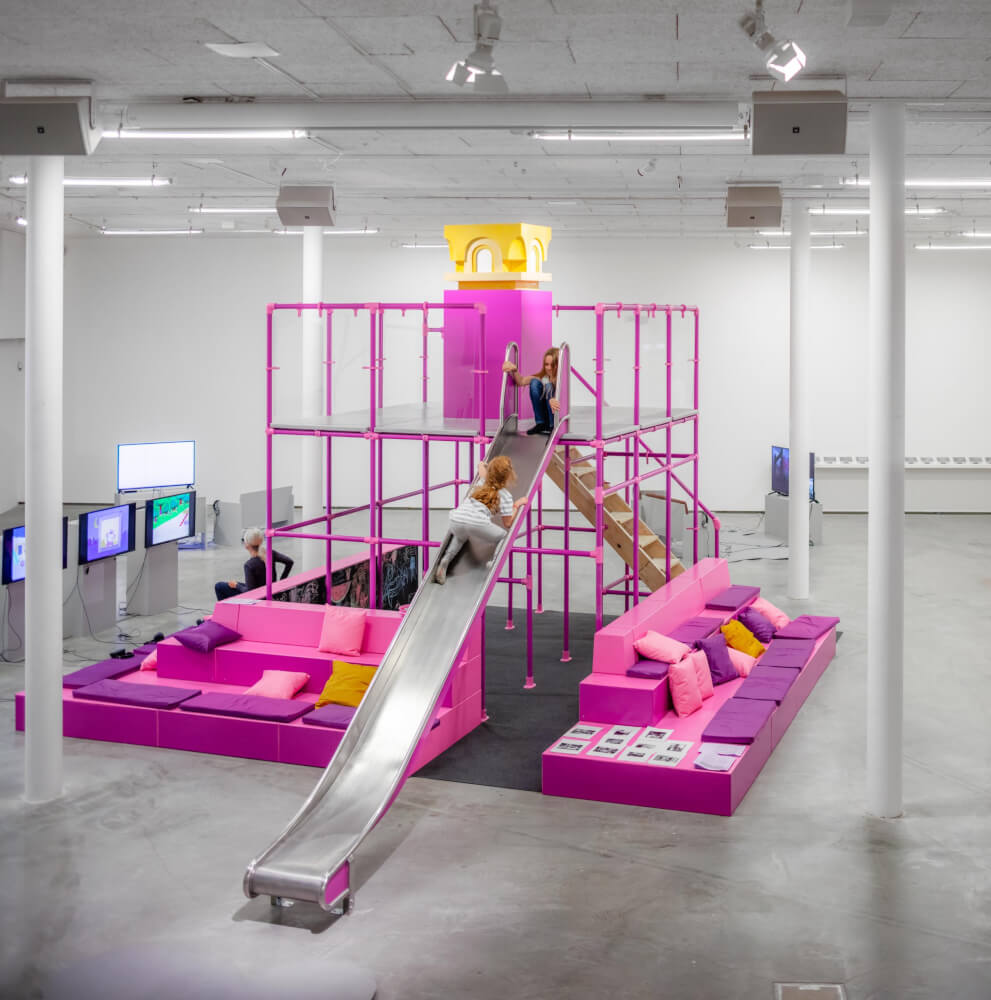
Behzad Khosravi Noori, exhibition view, The Monument to the Invisible Citizen, 2018. Photo: Jean-Baptiste Béranger
By revisiting the idea of the monument to the invisible citizen, I wanted to find a way to bring together these different historical strands of Yugoslav cultural production. When you look into history of monument development in Yugoslavia, you come to the understand that the idea of representing the invisible is a central reference point that shaped design thought.
My intervention resonates in the form of a playful, interactive multimedia monument that integrates two sources of history: an actual representation of a colourful monument from the ‘Martin Makes It to The Top’ (1967–68) episode, and the abstract language of Yugoslav Monuments. What could interconnect these two aspects of history to each other? My monument to the invisible citizen has a slide attached to it, evoking a simple decision which proposes a cross-generational relationship between two seemingly marginal narratives in the grand history of NAM. It struck me the way Branko Petrović addressed the idea of children’s playgrounds in 1955. He saw playgrounds as childrens’ workspaces, believing that the whole environment must enable children to build imagination and to use it extensively and prodigiously in their work. On the other hand, the monument suggests a hybrid intersection of different aesthetic influences between socialist modernism and the retro utopia of the ZSAF.
In Croatia’s political sphere today, marked by the post-socialist, conservative and patriotic right, I see the necessity to pose a question on what will happen to our collective past in the future? How could we define the foundation of Professor Balthazar here and now? The ideology of the Zagreb School of Animated Films, for me, embodies social, political and cultural agenda formulated by NAM: economical self-management and global political relationship to the Global South, based on anti-capitalism and anti-colonialism. Looking at the ZSAF history presents an interesting aspect of community art practice — generating a unique environment which resulted in particular productions that helped them to embrace a new kind of philosophy and storytelling simultaneously, especially using a metaphorical way of discussing subject matters. It was not just the concepts and ideas, but they managed to elaborate animation techniques and particular design strategies to achieve their ideas. The ZSAF was in its golden age, an amalgamation between criticality and advance narrative strategy.
For this reason after showing the exhibition in Sweden and Romania, I am starting a new stage of the project in Zagreb. How could we redefine the notion of invisibility/visibility within the history as well as people in Zagreb today, and take care of our collective memory by simultaneously finding a specific location for it? I think a contemporary art exhibition could be one of the platforms to elaborate the notion of representation, as well as the ambiguity of knowledge production by juxtaposition of ‘relevant’ and ‘irrelevant’ histories. The exhibition is a place to present a multiplicity of perspectives by bringing together fragments of collective histories and expose the entanglements between them.
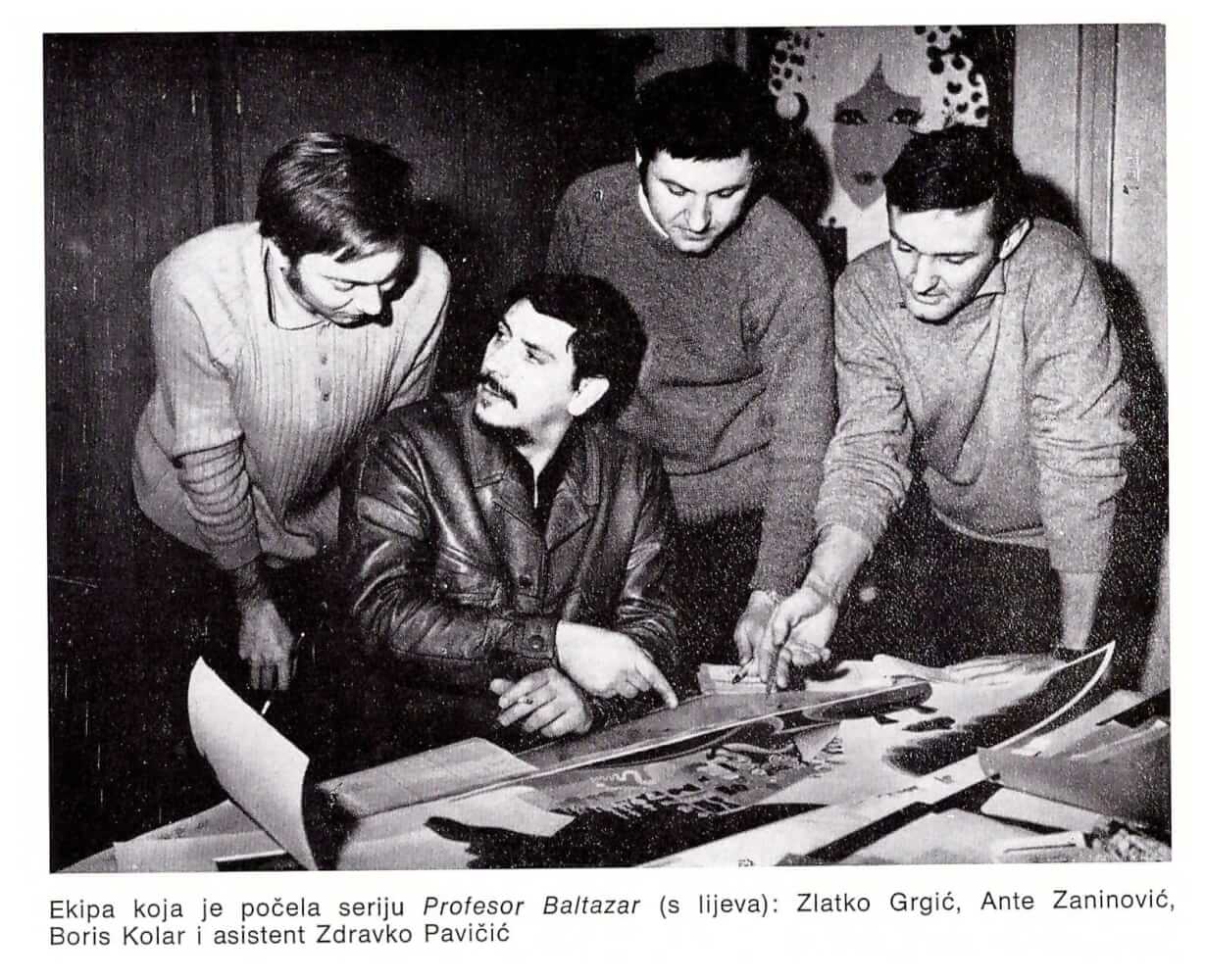
The team behind Professor Balthazar series (from left): Zlatko Grgić, Ante Zaninović, Boris Kolar and Zdravko Pavičić. Courtesy of the artist
The city of Balthazartown is a typical modern urban environment with its buildings, dark street corners and of course advertisements. The actual posters on the walls of Balthazartown in different episodes inspired the posters I co-created with Fredrik Holmqvist for the exhibition. These aesthetic expressions were not necessarily part of the main story, but show how the scenographers could make subtle additions to the stories. There are multiple narrative pathways that you could see in those posters, and at large in the series, that animate my perspective on uniting seemingly disconnected historical avenues.
I am interested in contemporary archeology and materiality of history. The question of memory in relation to the history fascinates me. It makes me think of Walter Benjamin's theses on the philosophy of history and the construction of memory. He argues that what is past does not mean to remember “how it really was.” It means to take control of a memory, as it flashes in a moment of danger. Yet again memory is relational and plural, connected to the other geographies. Perhaps this is my main political standpoint in the time that the grand political practices and politicians forcefully promote division, segregation, otherisation, racism, sexism, etc. This interwovenness, much like what is found in the depths of any archive, challenges the still common idea that there is one primary history to which these regional or personal histories are secondary.

Behzad Khosravi Noori, posters from The Monument to the Invisible Citizen, 2018. Courtesy of the artist
Bal- Balthazar, Bal- Balthazar, Balthazaaar
Below:
Behzad Khosravi Noori, The Monument to the Invisible Citizen, 2018.

It all started with a cartoon rendered in splashy technicolour retro utopia. A vibrant love letter to the golden era of the Zagreb School of Animated Films, a studio infamous for the iconic children’s program Professor Balthazar. The artist Behzad Khosravi Noori is about 10 years old and watching the show from his living room in Tehran. The centrepiece of each episode is manifested in the figure of a little grey-haired man, Professor Balthazar. He is an inventor of sorts pursuing a dedicated and deeply humorous mission to resolve the pressing dilemmas facing his fellow citizens. Every episode, Balthazar is able to save the day with an innovative gesture that unites technology and innate wisdom with a shade of good fortune. As the series began to air on local television in 1967, our hero takes his brisk walk on a hyper-political stage of Non-Aligned Movement (NAM), a multinational utopian project that emerged in 1961 from the complex political landscape of the Cold War. Orchestrated by three key figures: Josip Broz Tito, the president of Yugoslavia; Gamal Abdel Nasser, the president of Egypt; and Jawaharlal Nehru, the first prime minister of India, it aimed to achieve national sovereignty, decolonisation, anti-imperialism and new economic world order independent of USSR and US. Along the way, Professor Balthazar appeared on screens across NAM countries and flowered into a wider transnational phenomenon. Through a series of works that unearth the parallel histories between personal and political, Behzad Khosravi Noori excavates below the surface of this witty, whimsical character to pose questions on the future of our collective past. Can we attempt to situate in Professor Balthazar a relic to the flawed utopian project or a wistful memorial to the shared childhood memory? What happens to art when it crosses the border?


Stills from the professor balthazar cartoon
When I think about Professor Balthazar, more than recalling the exact story of an episode, I remember the condition: Iran during 80s, the war between my home country and Iraq, two feuded neighbours. We lived in Tehran, which was safer than the cities on the border, but we still got targeted. Rendered on a small black and white television, I could say that my first memory of Professor Balthazar was actually grayscale, devoid of colour, but true to its infectious musical theme. The sound of a crescendo score, “Bal- Balthazar, Bal- Balthazar, Balthazaaar,” swelling in our living room became a vessel that transported its otherworldly narratives into my world. Instances that carry my memory are a combination of skies threatening with missiles and the land of imagination in PB. The wild colours, simple stories, and playful personalities felt far removed from the brutal realities of conflict. I remember feeling a sense of ease, stirred by the Professor Balthazar’s defiant spirit of optimism. Other than being a pioneering ecologist and a promoter of mindfulness and tolerance, Professor Balthazar is also a time capsule that unpacks the story of a hyper-politicised time and place. His affable character and social awareness were a form of meta fiction that carried the plausibility of an alternative condition. Interesting fact: my Iraqi friends of the same generation also grew up with Hungarian, Yugoslav and Czechoslovakian animations while our nation-states were fighting against each other. The memory of our childhood is embedded in these opposing dualities: war and Balthazar.
Ironically, I don’t see myself as an outsider to the cultural specificity of this character — I am in fact digging into my own memory. My personal childhood memory in this case is fundamentally related to the history of Yugoslavia — an independent socialist state and one of the founders of the Non-Aligned Movement (NAM). I like to connect to it and respond in the form of hypothesis I have; how come we know about the Zagreb School of Animated Films (ZSAF), how come there is a connection? I started to look at the relationship between Iran and Yugoslavia and found that this relationship is very much connected to NAM. Professor Balthazar was introduced to the Iranian people only after the revolution in 1979, the same year Iran became a member of the movement. In this way I wanted to adopt a speculative and critical approach to the understanding of this global relationship, without any real historical evidence though. I came across one episode of Professor Balthazar that made me reconsider the idea of a monument, and approach it not only as a place of commemoration, but as an interactive tool triggering the possibility to think, play and rest. I’d like to share with you a fragment from this episode, Martin makes it to the top (1967-68). In Balthazartown there was a man named Martin. He could have been any ordinary Martin, except that he had a big problem. Nobody noticed him. Martin was miserable. Nobody, absolutely nobody ever noticed him. He was an invisible citizen. So Martin turns to Professor Balthazar , who encourages Martin to go out and fill in the blank pages of the book How to Climb to TheTop of Success. And how strange that at that very moment people began to notice the absence of a man who had never been noticed before. Suddenly everybody missed him. People felt a little bit guilty and so they pleaded to Professor . But not even he knew where Martin was. The entire town was looking for Martin. He had disappeared completely. In a special session at the city council it was decided to erect a monument in Martin’s memory, but how to make invisibility visible? Where did Martin go? What was the story of his success?

Behzad Khosravi Noori, exhibition view, The Monument to the Invisible Citizen, 2018. Photo: Jean-Baptiste Béranger
By revisiting the idea of the monument to the invisible citizen, I wanted to find a way to bring together these different historical strands of Yugoslav cultural production. When you look into history of monument development in Yugoslavia, you come to the understand that the idea of representing the invisible is a central reference point that shaped design thought.
My intervention resonates in the form of a playful, interactive multimedia monument that integrates two sources of history: an actual representation of a colourful monument from the ‘Martin Makes It to The Top’ (1967–68) episode, and the abstract language of Yugoslav Monuments. What could interconnect these two aspects of history to each other? My monument to the invisible citizen has a slide attached to it, evoking a simple decision which proposes a cross-generational relationship between two seemingly marginal narratives in the grand history of NAM. It struck me the way Branko Petrović addressed the idea of children’s playgrounds in 1955. He saw playgrounds as childrens’ workspaces, believing that the whole environment must enable children to build imagination and to use it extensively and prodigiously in their work. On the other hand, the monument suggests a hybrid intersection of different aesthetic influences between socialist modernism and the retro utopia of the ZSAF.
In Croatia’s political sphere today, marked by the post-socialist, conservative and patriotic right, I see the necessity to pose a question on what will happen to our collective past in the future? How could we define the foundation of Professor Balthazar here and now? The ideology of the Zagreb School of Animated Films, for me, embodies social, political and cultural agenda formulated by NAM: economical self-management and global political relationship to the Global South, based on anti-capitalism and anti-colonialism. Looking at the ZSAF history presents an interesting aspect of community art practice — generating a unique environment which resulted in particular productions that helped them to embrace a new kind of philosophy and storytelling simultaneously, especially using a metaphorical way of discussing subject matters. It was not just the concepts and ideas, but they managed to elaborate animation techniques and particular design strategies to achieve their ideas. The ZSAF was in its golden age, an amalgamation between criticality and advance narrative strategy.
For this reason after showing the exhibition in Sweden and Romania, I am starting a new stage of the project in Zagreb. How could we redefine the notion of invisibility/visibility within the history as well as people in Zagreb today, and take care of our collective memory by simultaneously finding a specific location for it? I think a contemporary art exhibition could be one of the platforms to elaborate the notion of representation, as well as the ambiguity of knowledge production by juxtaposition of ‘relevant’ and ‘irrelevant’ histories. The exhibition is a place to present a multiplicity of perspectives by bringing together fragments of collective histories and expose the entanglements between them.

The team behind Professor Balthazar series (from left): Zlatko Grgić, Ante Zaninović, Boris Kolar and Zdravko Pavičić. Courtesy of the artist
The city of Balthazartown is a typical modern urban environment with its buildings, dark street corners and of course advertisements. The actual posters on the walls of Balthazartown in different episodes inspired the posters I co-created with Fredrik Holmqvist for the exhibition. These aesthetic expressions were not necessarily part of the main story, but show how the scenographers could make subtle additions to the stories. There are multiple narrative pathways that you could see in those posters, and at large in the series, that animate my perspective on uniting seemingly disconnected historical avenues.
I am interested in contemporary archeology and materiality of history. The question of memory in relation to the history fascinates me. It makes me think of Walter Benjamin's theses on the philosophy of history and the construction of memory. He argues that what is past does not mean to remember “how it really was.” It means to take control of a memory, as it flashes in a moment of danger. Yet again memory is relational and plural, connected to the other geographies. Perhaps this is my main political standpoint in the time that the grand political practices and politicians forcefully promote division, segregation, otherisation, racism, sexism, etc. This interwovenness, much like what is found in the depths of any archive, challenges the still common idea that there is one primary history to which these regional or personal histories are secondary.

Behzad Khosravi Noori, posters from The Monument to the Invisible Citizen, 2018. Courtesy of the artist

